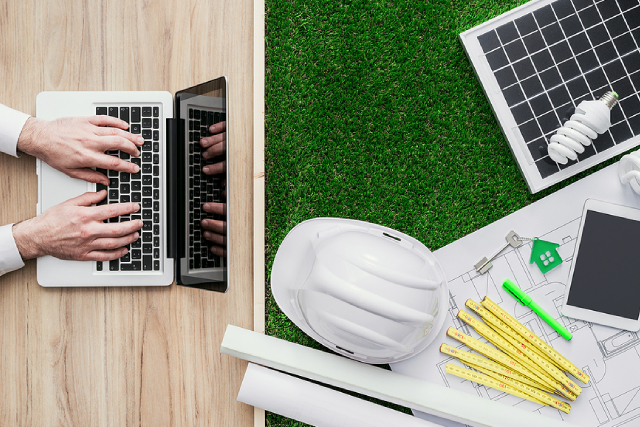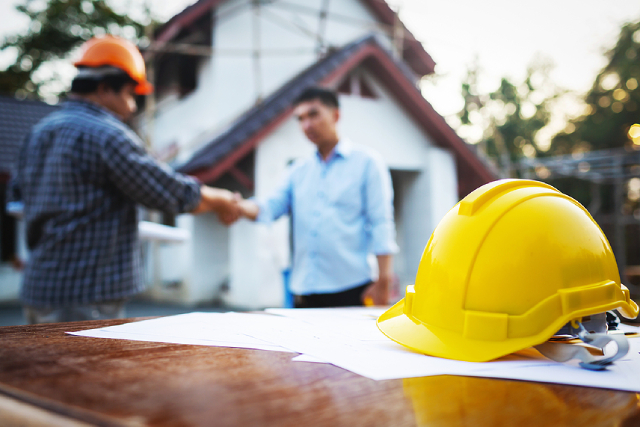The construction industry holds massive potential to support the goals of the Singapore Green Plan 2030. As buildings account for over 20% of the nation’s emissions, developers, contractors, and designers have an opportunity and responsibility to adopt greener practices. From choosing sustainable materials to improving energy efficiency, contractors can help drive significant environmental progress in both residential and commercial projects.
With Singapore aiming to green 80% of its buildings by 2030 and halve emissions from the built environment by 2050, the construction sector needs to evolve. But building greener doesn’t mean you need to completely reinvent your processes. Small, intentional changes made consistently can result in a large, positive impact, both for the planet and for your bottom line.
1. Choose sustainable materials
Start at the source. The materials used in construction play a major role in the project’s overall environmental impact. Opt for low-carbon alternatives such as recycled steel, reclaimed wood, or concrete with supplementary cementitious materials. Where possible, use local suppliers to reduce transportation emissions.
Pre-fabricated components are also becoming more popular in Singapore, especially in the Housing and Development Board’s (HDB) projects. These reduce construction time and waste while ensuring higher quality and consistency. For a rebuild contractor in Singapore, such choices can significantly reduce both environmental impact and build-time delays.
2. Embrace energy-efficient design
The design stage is where green thinking really pays off. Collaborate closely with architects and designers to prioritise natural ventilation, daylighting, and energy-efficient layouts. Smart orientation of buildings to capture prevailing winds and reduce heat gain can lower long-term energy needs, which translates into lower utility costs for clients.
You should also consider including features like green roofs, solar panels, and high-performance glazing. These might seem like premium add-ons at first, but they can dramatically increase the sustainability and long-term value of the property.
3. Minimise construction waste
Construction and demolition waste account for a significant portion of landfill in Singapore. To reduce your footprint, plan ahead to minimise over-ordering and work with waste management partners to sort and recycle materials on-site.
Consider implementing a waste management plan for each project, especially if you’re working in built-up urban areas. It’s not only more eco-friendly but can also reduce the mess, improve safety, and help with compliance. Reuse leftover materials wherever possible and donate surplus supplies to other contractors or community projects.
4. Tap into smart technologies
Technology is a game changer in sustainable construction. From Building Information Modelling (BIM) to IoT-enabled energy monitors, digital tools can help contractors make smarter decisions and reduce waste.
BIM, for instance, allows you to plan a build virtually before setting foot on-site. It helps identify design conflicts early and enables efficient use of materials. Meanwhile, IoT sensors can monitor energy use, water usage, and temperature in real time, providing data that can guide future design improvements.
5. Use green-certified products and methods
Whenever possible, select products that are certified green. Look for labels such as the Singapore Green Building Product certification, which indicates that the product meets strict environmental standards. Using certified paints, sealants, and adhesives that emit low or zero volatile organic compounds (VOCs) can also improve indoor air quality and reduce environmental harm.
Moreover, consider aligning your practices with BCA’s Green Mark certification scheme. Clients today are more eco-conscious, and achieving these certifications can give your project a significant competitive edge.
6. Train and empower your team
Sustainability doesn’t end with the materials and methods. It also relies on the people doing the work. Educate your crew about green practices, from proper waste disposal to energy-saving techniques. Workshops and certifications offered by institutions like the BCA Academy can equip workers with the knowledge they need to build responsibly.
A team that understands why sustainability matters will be more motivated to carry out greener tasks. Plus, this positions your business as a forward-thinking partner, something that clients and developers increasingly look for in today’s market.
7. Consider lifecycle costs, not just upfront costs
Clients often focus on upfront construction costs, but sustainable contractors know the importance of thinking long-term. Energy-efficient systems, for example, might cost more at installation but can save thousands in utility bills over the years.
As a rebuild contractor, you can help clients understand these savings through lifecycle cost analysis. This not only promotes greener choices but also adds value to your expertise as a contractor who sees beyond the surface.
8. Rethink project scheduling
Sometimes, greener practices are as simple as rescheduling. Consider how your timeline might affect energy use, noise pollution, or traffic disruption. For instance, avoid heavy deliveries during peak hours and stagger certain works to reduce energy demand.
Also, build flexibility into your timeline to allow for inspections or tweaks that could improve a project’s sustainability rating. This can be especially important for commercial builds, where environmental ratings play a role in tenancy appeal.
9. Build with the future in mind
Think of every project as part of Singapore’s sustainable future. That means designing buildings that can adapt to changing climates and occupant needs. Use modular designs, flexible layouts, and materials that can be easily dismantled or repurposed down the line.
Future-ready buildings also consider green commuting – think bicycle parking, EV charging stations, or access to public transport. These features might seem minor, but they play a role in promoting a greener lifestyle and supporting national goals.
10. Go beyond symbolism
It’s easy to light candles for an hour once a year, but real change happens on-site every day. Ask yourself if Earth Hour is enough to move the needle or if your everyday practices are aligned with the larger picture of sustainability. Clients are becoming more informed, and they can tell the difference between greenwashing and genuine action.
Conclusion
As Singapore continues its journey towards a more sustainable future, green construction is no longer a nice-to-have; it’s a must. Whether you’re retrofitting a shophouse or developing a brand-new office space, building greener makes business sense and environmental sense.
At Kang Sheng Engineering, we’re proud to offer comprehensive design-build services and general contracting services for both residential and commercial projects. Let us help you bring your sustainable vision to life beautifully, responsibly, and efficiently.



